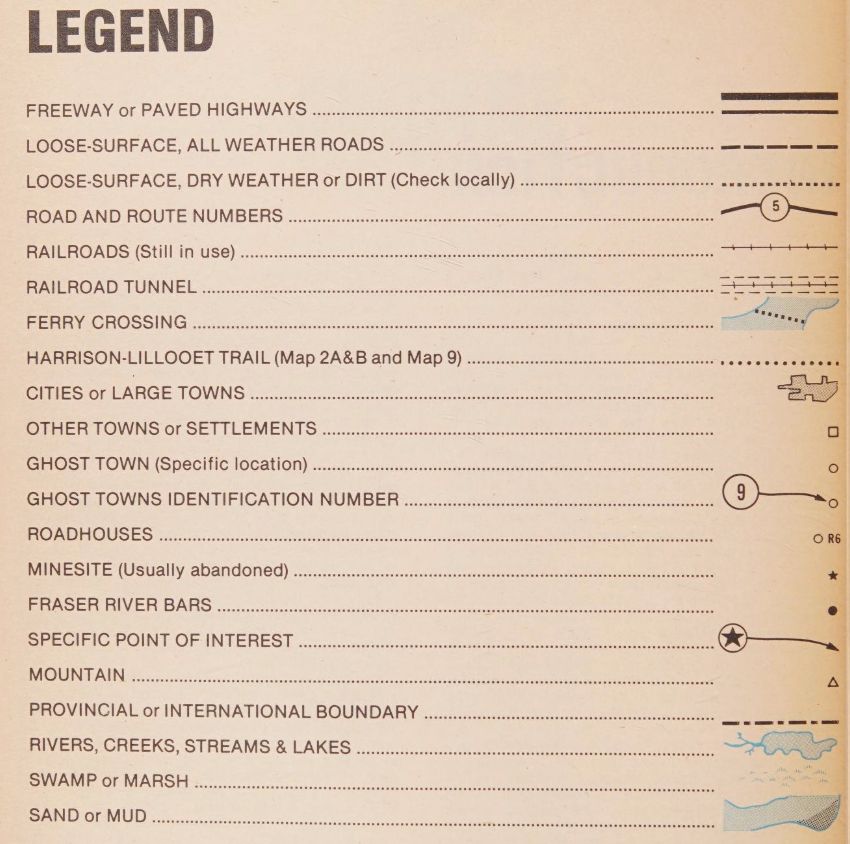UofA Map/GIS Librarian
@wyman10.bsky.social
1.5K followers
420 following
200 posts
William C. Wonders Map Collection, University of Alberta Library. Curation by Wyman Laliberté (he/him) (settler on Treaty 6 land).
WCW Map Collection on Internet Archive
https://archive.org/details/wcw
#spatial #maps #cartography #gis #qgis
Posts
Media
Videos
Starter Packs
Reposted by UofA Map/GIS Librarian


![[pano-photo looking south] of Map a-day-in May (a thirty-one cabinet display). Exhibiting atop the north shore of the 4th floor map cabinets in the Cameron Library.](https://cdn.bsky.app/img/feed_thumbnail/plain/did:plc:q66r3vy7xepmx62ti4vt7uzb/bafkreigwwmnlvqmgtt4nk4tuqbnsurx6uzpmpq3xirb4k2pgetao75lgae@jpeg)
![[photo looking west] of Map a-day-in May (a thirty-one cabinet display). Exhibiting atop the north shore of the 4th floor map cabinets in the Cameron Library.](https://cdn.bsky.app/img/feed_thumbnail/plain/did:plc:q66r3vy7xepmx62ti4vt7uzb/bafkreic3wuud3ufjtlgnyy4rtp2j476z3dpab63satblw76lnlfyp6a7s4@jpeg)




![[Inset Map] "Intervention in the East in 1918. From the map The Beginning of Intervention and the First Period of the Civil War. USSR. Published by Scientific Map Compilation Section - GUGK) in 1959.
Conventional Signs
Left:
-- Area of Actions of the red partisans
-- Retreat of the red partisans to the Taiga
-- Killing of 9 centro-Siberians by whites
Right:
-- Uprising of the workers of Japan in August 1918 (rice riots)
-- Uprising of military units against the White Guard government Kalmykov in January 1919
-- The intervention of the Entente countries and the Japanese (landers)](https://cdn.bsky.app/img/feed_thumbnail/plain/did:plc:q66r3vy7xepmx62ti4vt7uzb/bafkreiawxamvl3omdubil65ty3z52eamaffg26mjemidisgnvlicibjh7y@jpeg)

![[portion] of Denoyer-Geppert social science maps. H29 Growth of Russia. Shows the legends for Russia 1462 to 1914 and Russia 1914 to 1939.
Compiled and Drawn by R. Baxter Blair
2 col. maps on 1 sheet:](https://cdn.bsky.app/img/feed_thumbnail/plain/did:plc:q66r3vy7xepmx62ti4vt7uzb/bafkreihrz3s7ixq4jntr7c42wlr377peyky6tejbota6fpnipju6dq6wou@jpeg)

![[portion] of Plano de la Ciudad Mazatlan Published by Litografia Industria 1930. Shows mountain area and city blocks.](https://cdn.bsky.app/img/feed_thumbnail/plain/did:plc:q66r3vy7xepmx62ti4vt7uzb/bafkreiaklxoac4k4eqzddde3hkua6uydxmkvvg2qgntetebprvaw4rqcsq@jpeg)

![[portion] The City and Port of Mazatlan. Published by Triumph Press. 1965. Kym's Guide No. 58. Showing the location of the Sands Hotel (B2) in 1965.](https://cdn.bsky.app/img/feed_thumbnail/plain/did:plc:q66r3vy7xepmx62ti4vt7uzb/bafkreihqixyadniffmqbvdglsbyfaqxwfeigjbesimzbythtzjxeyzqsuy@jpeg)
![[portion] Map of Mazatlan Sinaloa Mexico. Kym's Guide No. 58. Maps and Charts of Recreation Areas. Published by Triumph Press. 1965.](https://cdn.bsky.app/img/feed_thumbnail/plain/did:plc:q66r3vy7xepmx62ti4vt7uzb/bafkreiaqk5pkj54z6rybjzjxfjb453753jm67tv6pktresoyctc4vdl5mu@jpeg)














![Western Canada railway map Mundy Map Co. 1955 (Revised 1987)
by G.A. Lester.
B &W map, 66 x 231.5 cm. ozalid reproduction.
Insets: [Lower Mainland of British Columbia]; Extension to Nipigon-Longlac, Ontario; [Edmonton]; [Winnipeg].
Outset: [The rival lines of the Grand Trunk Pacific and the Canadian Northern from the vicinity of Edmonton to Mt. Robson.
Earlier map: Mundy Map Co. Western Canada routing map 1923
https://archive.org/details/WCW_M000425](https://cdn.bsky.app/img/feed_thumbnail/plain/did:plc:q66r3vy7xepmx62ti4vt7uzb/bafkreifpzv6vycexotovbxmo67tk35uuusbbwixqhiaurghfdbbjyslvmu@jpeg)
![[pano view] of the original 4 sheets of the 1955 Mundy Map Co. "Western Canada Routing Map. This mounted map is what cartographer G.A. Lester would have worked off of to create their revised 1987 map.](https://cdn.bsky.app/img/feed_thumbnail/plain/did:plc:q66r3vy7xepmx62ti4vt7uzb/bafkreigdseak6uk3yce3lipyavbbaafkkkjxvbd3lj7ckv5coz257zgkme@jpeg)


![[portion] Isodemographic map of North America, 1975-1976. Published by by Queen's University, Dept. of Geography 1978.
This map is an illustration of the characteristics of population distribution in North America. Those metropolitan areas depicted have a population of 250,000 or greater as determined from census information current as of 1975-76. Isodemographic maps are scaled in proportion to the number of people they contain. Attempts have been made to preserve the distinctive shapes of most political and geographical units. In order to maintain contiguity between adjacent units, it has been necessary to trade off some attributes of their spatial characteristics, including shape and orientation. As is clearly shown, North American population is highly urbanized, with foci on the Eastern Seaboard, in the Midwest and on the West Coast. Standing out from these established foci are the newer 'growth centers of Atlanta, Houston, Denver, and Toronto. Many metropolitan areas are in reality sections of still larger conurbations. As an example, the New York metropolitan area covers but a small part of what might be called the New York conurbation including much of New Jersey, Connecticut and all of Long Island. The urban/rural split in North America can also be seen from the map. At opposite extremes one might note the Northern Rocky Mountain states with no metropolitan structures, while on the other hand New Jersey is composed almost completely of metropolitan governments. Somewhere in the middle of the spectrum would be the Southern states, with a large rural population and several large, growing urban centers. Canada's ecumene consists of a 200 mile wide belt with numerous cities in the west and east but very low population in between. The primacy of Montreal and Toronto is clearly evident as is the urban hierarchy of southern Ontario. As a demographic portrait, this map has as its main advantage an easily perceived pattern of population in North America.](https://cdn.bsky.app/img/feed_thumbnail/plain/did:plc:q66r3vy7xepmx62ti4vt7uzb/bafkreicwpkmhmyx4nnnsl4psfoeahqequjzzizngez7f5ehvqo64f3hwmu@jpeg)


![Cover of
Isodemographic map of Canada
Authors: L. Skoda, J. C. Robertson
Print Book, English, [1972, ©1967]
Publisher: Dept. of the Environment, Lands Directorate, Ottawa, [1972, ©1967]
Physical Description:
viii, 34 pages illustrations, maps (2 folded color in pocket) 28 cm.](https://cdn.bsky.app/img/feed_thumbnail/plain/did:plc:q66r3vy7xepmx62ti4vt7uzb/bafkreie32yorpupjcfpdtt5mcfaj7nf4av32n7avlk6k4xuufizrfd744i@jpeg)
![Page 6 from the Isodemographic map of Canada by L. Skoda, J. C. Robertson. Dept. of the Environment, Lands Directorate, Ottawa, [1972, ©1967]
Page notes: the process of Orthomorphic transformation including Figure 5. Shape deformation principal: a hypothetical situation in which map grid lines designate segments of territory with different populations,](https://cdn.bsky.app/img/feed_thumbnail/plain/did:plc:q66r3vy7xepmx62ti4vt7uzb/bafkreiej4re6spfnbztvrijismi7hjhd4fyitzt22aru4t43zezoa2y7am@jpeg)









![[section] showing faults and map folds
South Lancashire Coalfield: contour plan of the Trencherbonie Mine and Ashton Black Mine, by George Hickling. Two inches to one mile by Lancashire and Cheshire Coal Association 1924.](https://cdn.bsky.app/img/feed_thumbnail/plain/did:plc:q66r3vy7xepmx62ti4vt7uzb/bafkreievf3e6y4nt7nrsl2ee37lqg625z6wgpn63hffgylp5lmdz23xkpe@jpeg)







